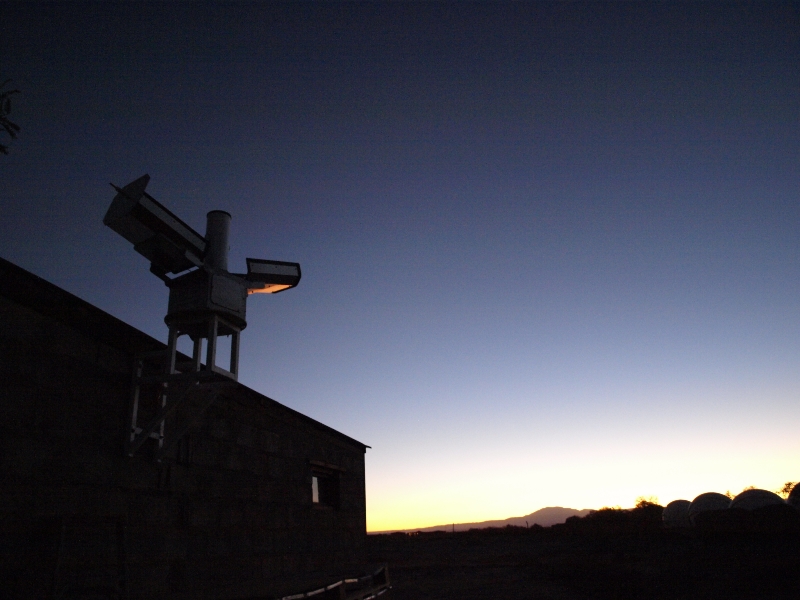1 Introduction
During the night of 2020 May 17 at 01h45m21s UT a peculiar bright meteor appeared above Belgium, not spectacular in brightness but with a very long trail at the sky. The event was captured by cameras of the CAMS BeNeLux network, BOAM, the Global Meteor Network and several all-sky cameras (Figure 3 and 4), including FRIPON stations. The meteor also caused some strong meteor echoes captured by BRAMS stations. The meteor caused some confusion as it appeared at the sky like a typical Eta Aquariid (ETA#031) for any observer while the calculated geocentric radiant position is rather far from the reference position.
2 The observational data
The meteor appeared very nicely in the field of view of the RMS camera BE0001 installed at Grapfontaine, Belgium (Figure 1) and in the upper right corner of RMS camera BE0003 installed at Genk, Belgium (Figure 2).

Figure 1 – Meteor 2020 May 17 at 01h45m21s UT at Observatoire Centre Ardennes, Grapfontaine, Belgium.

Figure 2 – Peculiar meteor 2020 May 17 at 01h45m21s UT at Cosmodrome, Genk, Belgium.

Figure 3 – Meteor 2020 May 17 at 01h45m21s UT at Oostduinkerke, Belgium (courtesy Geert Vandenbulcke).

Figure 4 – Meteor 2020 May 17 at 01h45m21s UT with the radio echo reflection of BRAMS at AstroLab, Zillebeke-Ieper, Belgium (courtesy Franky Dubois).
The FRIPON network registered the fireball at 7 stations:
- FRNP05 – Arras, France;
- FRNP02 – CappellelaGrande, France;
- NLWN01 – Noordwijk, Netherlands;
- BEBR01 – Bruxelles, Belgium;
- FRPI01 – Amiens, France;
- NLWN02 – Oostkapelle; Netherlands;
- BEWA01 – Liege, Belgium.
3 Orbit and trajectory
The multiple station data of CAMS BeNeLux, the French network BOAM (Figure 5) and FRIPON allowed to calculate the trajectory and orbit. The results can be compared in Table 1. Unfortunately, the GMN did not provide an orbit for this bright meteor as somehow the quality requirements were not met for the data of the RMS cameras.

Figure 5 – Meteor 2020 May 17 at 01h45m21s UT, trajectory calculated with SonotaCo software by Tioga Gulon.
The meteor appeared like an Eta Aquariid but the calculated geocentric radiant position is rather far from the references listed for this shower (αg = 338°, δg = –1°). However, the orbital elements fit well with these of the Eta Aquariids, except for the inclination i = 144° against 164° for the eta Aquariids. Still it is very likely this meteoroid is an outlier of the eta Aquariid stream as a number of processes cause particles to get spread away from the main stream on slightly different orbits.
Table 1 – Orbit of the fireball of 17 May 2020 at 01h45m21s UT by CAMS BeNeLux (Carl Johannink), BOAM (calculated with UFO Orbit by Tioga Gulon) compared to FRIPON (François Colas).
| CAMS BeNeLux |
BOAM France |
FRIPON | |
| αg | 343.9° | 343.8° | – |
| δg | +12.1° | +10.8° | – |
| Hb | 130.1 km | 118.8 km | – |
| He | 87.0 km | 89.6 km | – |
| vꝏ | 64.75 km/s | 65.9 km/s | – |
| vg | 64.8 km/s | 64.7 km/s | – |
| a | 287.2 A.U. | 17 AU | 44.8± 00.9 A.U. |
| q | 0.6442 A.U. | 0.644 A.U. | 0.6379±0.004 A.U. |
| e | 0.9978 | 0.963 | 0.9857±0.029 |
| ω | 105.8° | 105.1° | 104.83±0.96° |
| Ω | 56.346° | 56.352 | 56.346±0.0005° |
| i | 144.4° | 146.7° | 144.99±0.72° |
4 BRAMS radio echoes
Hervé Lamy reported that this fireball generated huge meteor reflections which completely saturated the receivers with very strong head echoes visible (Figures 6 and 7).

Figure 6 – Meteor 2020 May 17 at 01h45m21s UT spectrogram at BRAMS station Oudsbergen (courtesy Hervé Lamy).

Figure 7 – Meteor 2020 May 17 at 01h45m21s UT spectrogram at BRAMS station Saffraanberg (courtesy Hervé Lamy).
Acknowledgment
The author wishes to thank François Colas for providing the FRIPON data, Tioga Gulon for providing the BOAM trajectory and orbit data, Carl Johannink for providing the CAMS BeNeLux data, Hervé Lamy for providing the BRAMS data and Franky Dubois and Geert Vandenbulcke for their permission to include their images.








